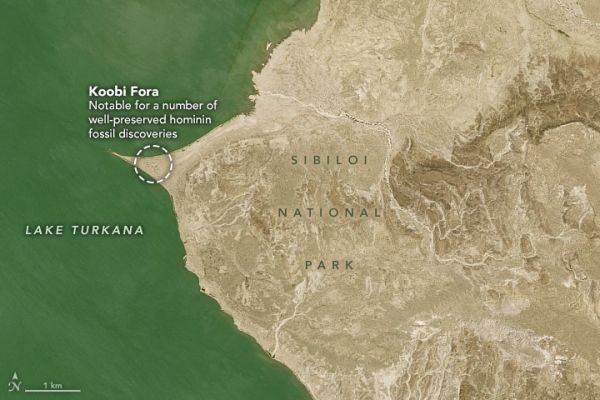Surrounded by arid and barren land in east Africa, Lake Turkana is the largest permanent desert lake in the world. It is sometimes referred to as the Jade Sea due to its green color, a result of abundant algae. The lake is also unique for the largely intact fossils found along its shores, which have contributed more to the understanding of human ancestry than any other place in the world.
The image above shows Lake Turkana (formerly Lake Rudolf) on December 10, 2020, as observed by the Moderate Resolution Imaging Spectroradiometer (MODIS) on NASA’s Aqua satellite. The majority of the lake is located in the Great Rift Valley of Kenya, with its northern tip poking into Ethiopia. The lake stretches 250 kilometers (150 miles) from north to south and up to 44 kilometers (27 miles) wide. Like many desert lakes, Lake Turkana is a salty, closed basin.
Despite the unwelcoming environment for humans today, Lake Turkana was an ideal place for settlements about two million years ago, when conditions were wetter and greener.
Continue reading at NASA Earth Observatory
Image via NASA Earth Observatory


